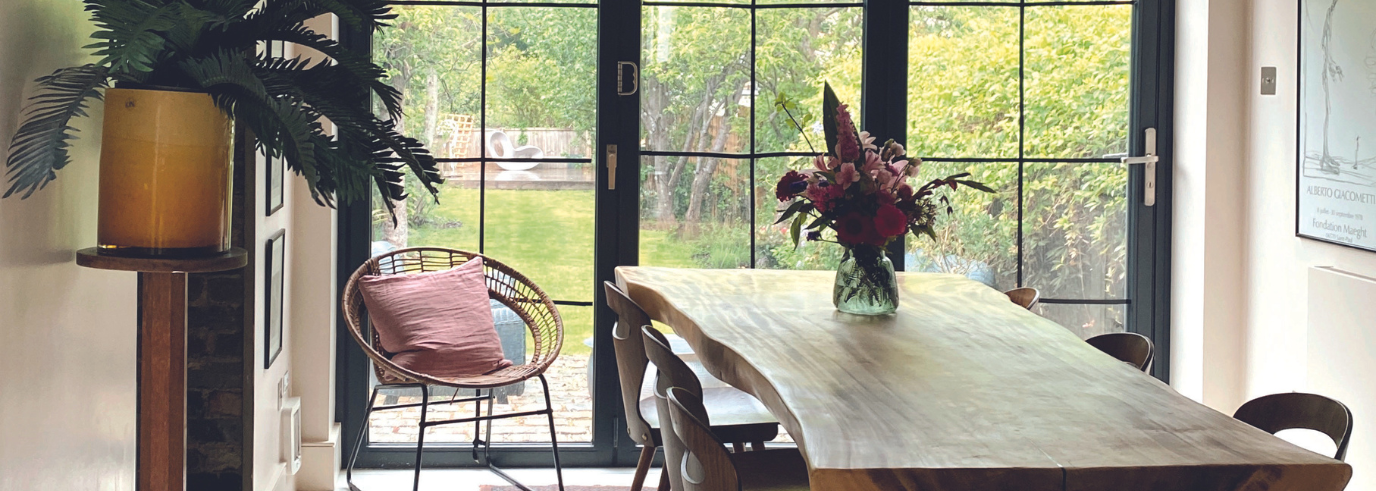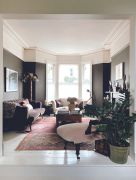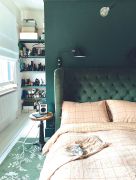
Room for improvement
Found your dream home and planning some changes? Kate Watson-Smyth can show you how to make your space work for you.
6 July, 2022
As the woman behind the UK’s number one interiors blog, Mad About The House, Kate Watson-Smyth is used to being asked for advice and it’s her honest and relatable tone – as well as her great eye – that makes her such an authority. Her much-photographed north London home is a living example of how to achieve successful design, and now Watson-Smyth, a journalist and blogger who has become a serious design mover, is launching an online course to help the rest of us realise our interiors dreams.
The big thing about Watson-Smyth is that she’s not snooty or dogmatic, and her mission is to demystify the process of decorating your house the way you want it. And because deciding on the way you want it is almost half the battle, that’s what she focuses on with this course, which is dedicated to finding your own interior design style.
Note ‘your own’ – she’s not advocating recreating her own style (though we’d wager that many of her followers are quite keen to do exactly that) because her core belief is that living somewhere you love has an enormously positive impact on your overall happiness and wellbeing. The timing of the course’s launch really couldn’t be better, with the idea of wellbeing at home becoming more relevant than ever over the past two years. “I think a lot of people have now realised the link between your surroundings and your mental health,” she says. “In the past, a lot of people would move into a house, slap a colour on the wall, think ‘that’s quite nice’, and then go to work and not see it again in daylight until they were on holiday.
Being forced to spend time indoors has led people to think, ‘well actually I hate this room’ and then start to analyse why they hate it. So that’s led to an interest in working out what colours you like and what you use your rooms for. And that’s where my courses and books come in.” For Watson-Smyth, the starting point is to ask six basic questions, just as she was taught as a trainee journalist. It’s all about the who, what, why, when, where and how.

It's about choosing the colours you love and then matching the mood of them to the room you need.
“It’s about knowing what questions to ask. It’s fine if you like teal blue, but you can’t look at a colour in isolation and think, ‘I love it; I’m going to paint it all over my living room’. You have to think, how does that colour make you feel? And if it makes you feel energised, buzzy and ready to start the day, then maybe that’s not the colour for the bedroom. Maybe it’s more the colour for the kitchen. It’s about choosing the colours that you love and then matching the mood of them to the room you need.” The course is essentially five hours of video material broken down into manageable 15-minute lessons explaining where to start and all the questions you should ask. “It’s not about being didactic and saying this is how it’s done; it’s saying, if you follow this process you will know how you want to do it – you’ll have learnt how to do it yourself,” says Watson-Smyth.
It’s illustrated with a walk-through of her own very lovely and well considered house, with honest reference to mistakes she has made and things she has changed or would do differently. The major game-changer for interiors in the past decade or so has been Instagram, which Watson-Smyth loves. “Instagram has been hugely important for interiors, and has democratised it. Magazines remain influential and inspirational, but only certain types of houses get featured, while Instagram has allowed everybody to put their houses up. If you live in a one bedroom flat you’ll be able to find someone on Instagram who’s done their one bed flat beautifully for inspiration. People are doing whole tutorials on how to paint your UPVC windows and everything. It’s made us all more design literate. If you wanted to see what someone’s house looked like in Japan, 30 years ago you’d have had to go to Tokyo, but now you can see how people live and use space instantly.”
There’s a chapter in the course on navigating social media, because it’s easy to become overwhelmed with so much inspiration out there. If you have 300 pins on your kitchen board, you’re not going to know what to do. And then there are doors. A whole section of the course is dedicated to doors, which makes total sense when you see the different doors in her house. “The standard door can take up a lot of space,” she explains. So on the landing there is one that’s cut in half and folds backwards to save space, while the door to her en-suite is cut in half and hinged on either side, again saving space. “Plus, I’m a huge fan of sliding doors. I can’t believe that nobody talks about doors.” Another interesting element of the course focuses on relationships. Or more accurately, on persuading one’s partner to agree to things like pink walls and gold grout.
Not that Watson-Smyth managed to get gold grout past her own husband. “We have developed something over the years called the marital veto. It’s only been used about three times – last time was when we were doing the loft six years ago and I wanted gold grout in the bathroom. He just said no. I cried on Instagram for a bit and now I hate to admit that he might have been right.”

We have created something called the marital veto. It's been used about three times.
Looking to make a move?
Contact our local experts today.